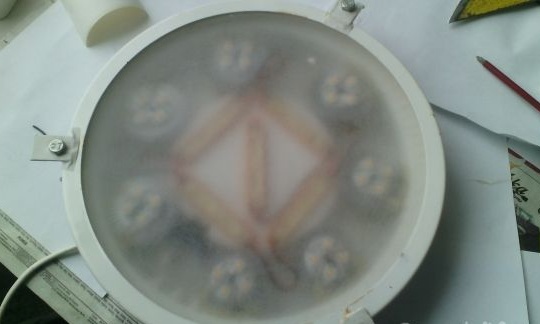
Now, probably, most people use LED lamps for lighting in the house. But, like all bulbs, they also fail. In 70% of the faults, the driver, as a rule, the LEDs remain working. Out of seven of my used lamps, only one had a “spoofed" LED. I already had some order of the burned-out ice lamps, and the question was, in the trash or in the business. Conscience did not allow me to throw them away just like that. Still, I am a lover of radio electronics, and I also have the education of an energy engineer. And so well at work, an unnecessary lamp with an incandescent lamp caught my eye. There was plenty of room in it, and so it was decided to try to do a useful thing. Moreover, there is a lamp and ice lamps.
What is needed:
Burnt led lamp
Incandescent lamp
Power supply (ice driver) on 12V 1A
Connecting wires
Any ice to decorate
Soldering iron
Drill / screwdriver
Multimeter
Voltage source for verification (battery or power supply)
A couple of bolts and nuts
Double-sided tape
Lamp.
The original used lamp looks like this.
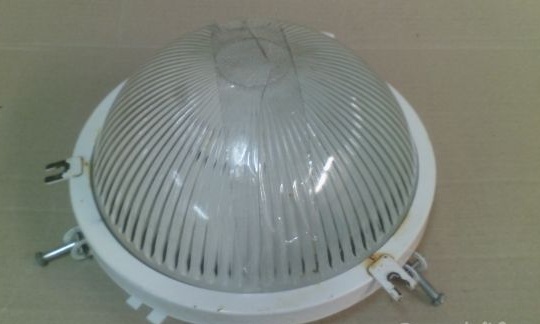
I threw off the top glass as unnecessary and use plexiglass instead. Plexiglass is on a stainless steel and therefore poorly visible.
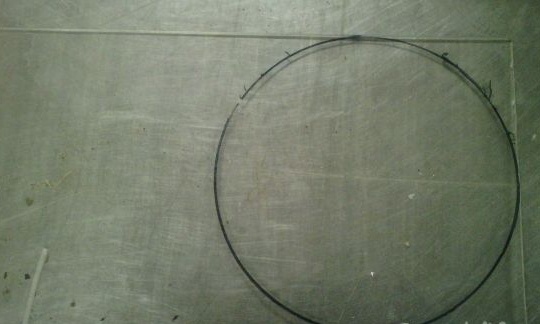
Cut and sandpaper wrap one side.
In the lamp on the old glass there was such a rubber band.
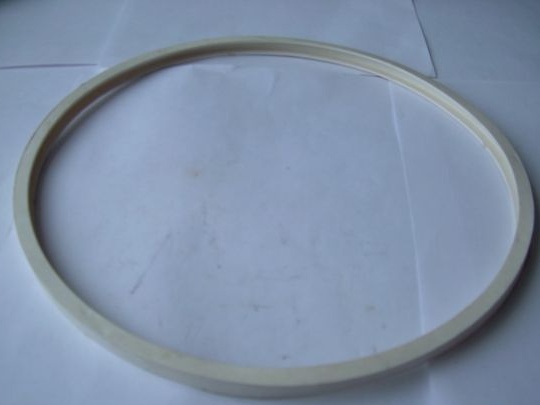
I didn’t throw it away, it might come in handy!
With a flat glass diffuser, the lamp takes a completely different look.
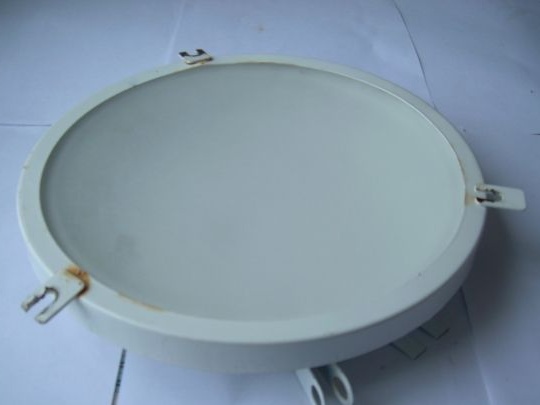
The height of the lamp is about 5-6 cm.
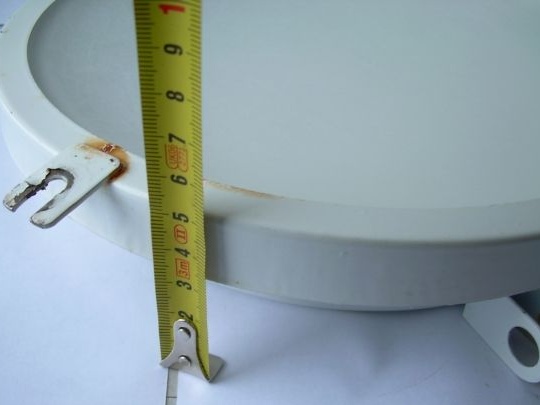
LED lamp
Here, in such ice lamps, I decided to "breathe" a second life.

I did not use lamps in which there were 3 LEDs.
The top matte cover is simply twisted.
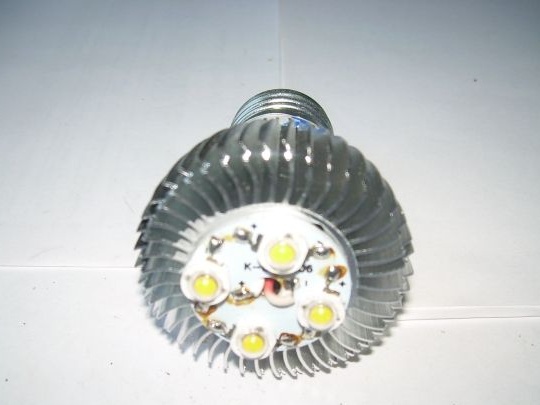
Lamp disassembled. Here we see our "ill-fated" driver, which refuses to work!

For the sake of the purity of the experiment, I decided to look for a similar driver on alishka. For the price, they cost a little more than half an ice lamp. I found this not appropriate.
Or maybe I was wrong and the LED just burned out? Weakly believing in this theory, I confidently bring 12v to the power wires.
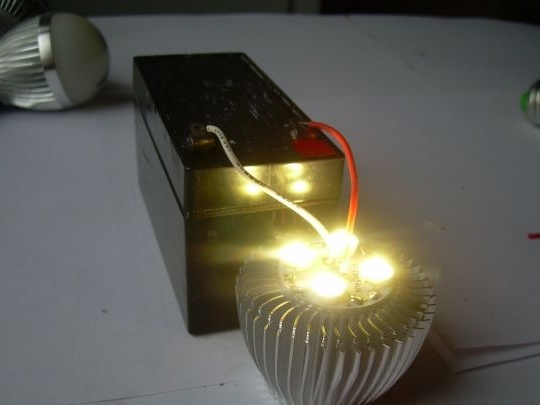
Burn !!!!! And so with all the rest. Why don’t they burn, the driver usually “flies”. The LEDs in the lamp are connected in series. Only in one lamp did I find a blown LED, and that is very strange. When you connect the LEDs, they light up brightly and well, but if you wait 5 minutes, then all 4 LEDs start blinking.This happens due to the fact that one LED is walking around, and it starts to “lose ground”. They all blink because they are connected in series. Therefore, if you decide to make a lamp from used ice lamps, I recommend that you first connect them to a voltage source and let it work a little. Unfortunately, it is impossible to visually figure out which LED is "showing off". I soldered each LED in turn and replaced it with a working one. So calculated.
As can be seen from the picture, the LEDs do not shine very brightly. This is where my question became: is there enough light flux to illuminate at least the hallway or the bathroom. I decided to experiment with LEDs and see their current. So I was taught at the university, it is imperative to take measurements and fix with formulas and calculations. I don’t understand how to do something electric and not measure voltage and current. These values are for me the holy of holies. Ammeter and voltmeter force !!!!!
I pulled out one LED and soldered a jumper there.
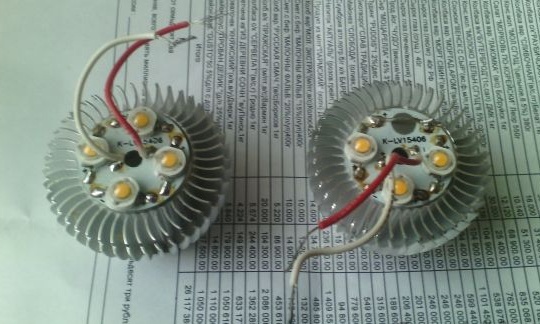
I turn to my favorite measurements !!!
Battery voltage 12.02 V
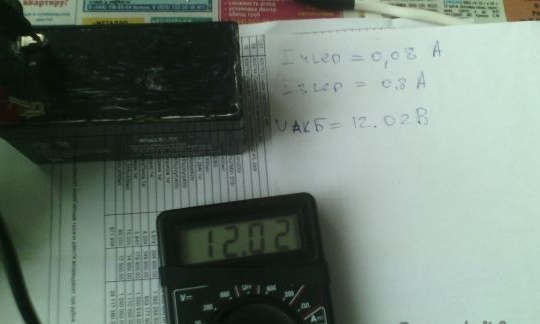
The current at 4 LEDs is 0.09 A, ha .... pennies.
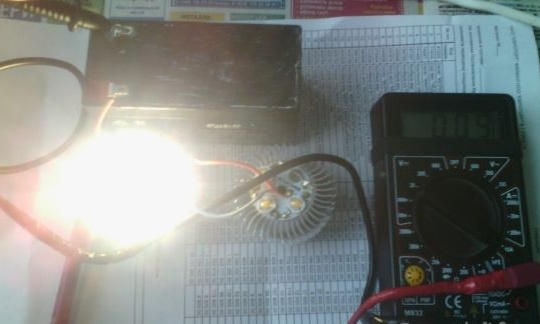
The current at 3 LEDs ... ..WHO as much as 0.8 A !!!! Here the readings are very poorly visible, in the next photo I will dispel your doubts!
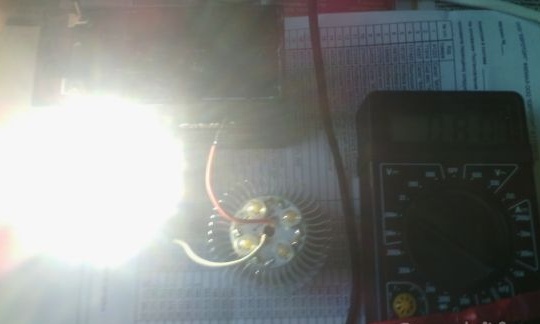
Indeed 0.8 A !!!
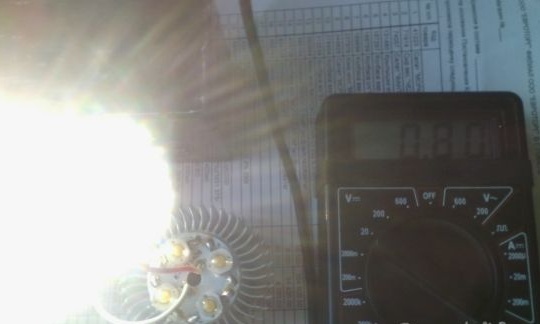
When connecting 4 LEDs on 12V, the luminous flux is approximately 30% of the brightness that the original driver gave. That is, with the native driver 100% and from the battery about 30%.
When connecting 3 LEDs to 12 in the luminous flux amounted to approximately 60-70% of the original brightness.
3 LEDs give good brightness, but they also “eat” a decent current, the radiator heats up with a moment. 4 light-emitting diodes shine a little, current consume "gentle", the radiator is hardly warm. My suspicion crept in that the original ice driver voltage was about 18-20 V. Well, okay, figs with it.
Then the question immediately became about the power supply, with which I will power all my ice industry.
I found here such a power supply or an ice driver.
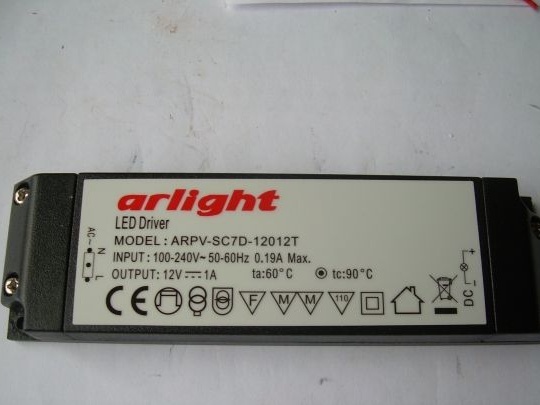
He has a maximum current of 1A, so the question of 3 or 4 ice is removed. Once everything is clear, then it's time to move on to installation.
I drill holes and tightly fasten the power supply.
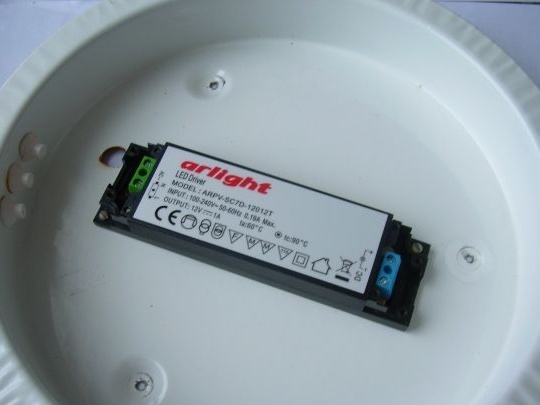
So, 7 pieces of broken ice lamps got into my networks. I decided to mount the LEDs along with the radiators inside the lamp, the more the place allows.

It would be more, it would be better, but it will do!
I have everything with ice in a circle and glue-snot stick them!
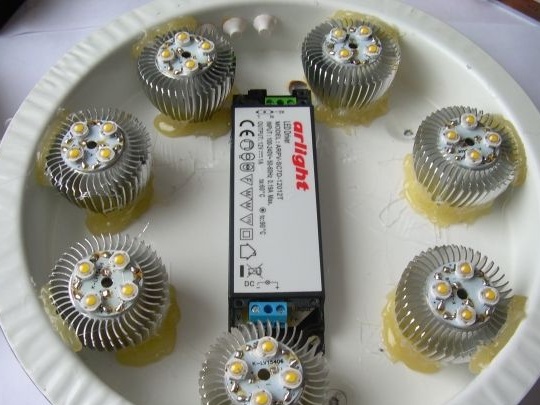
During gluing, vague doubts about my glue tormented me whether it would melt. Before that, I checked one lamp connected to the battery. She enlightened for 5-10 minutes and was barely barely warm, this gave me a little incentive to use such glue.
In the center, I decided to add more LEDs to give a more beautiful look to my lamp. To do this, I found this ....... I don’t even know what to call it. The material is like plastics, but softer.

I cut out such a circle.
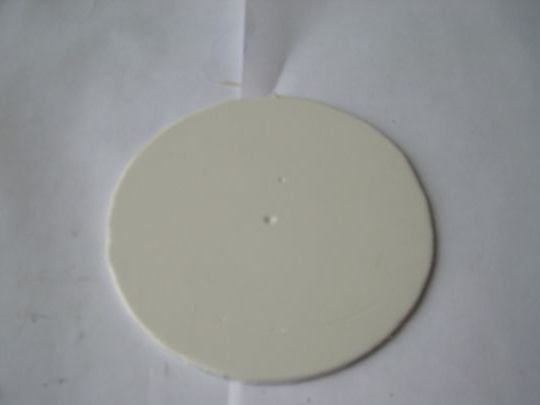
Immediately sculpt double-sided tape on it.
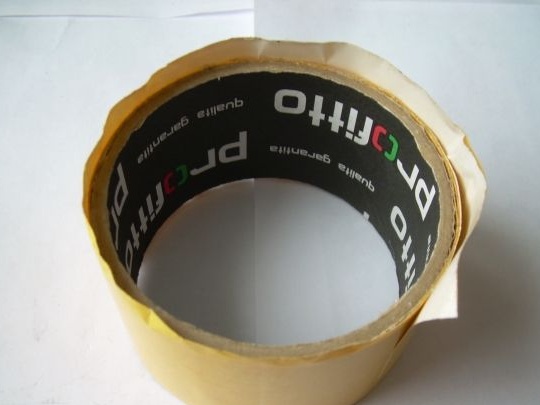
Like this!
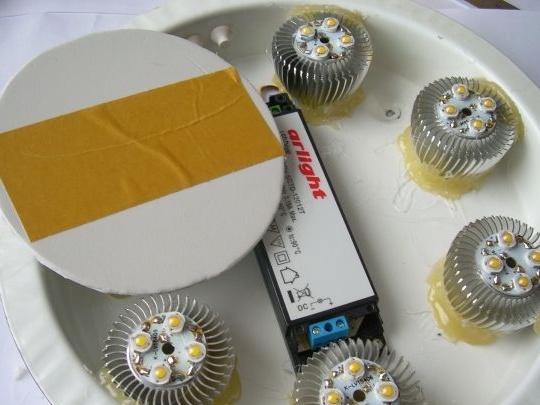
As a decorative illumination, I use LEDs shot from an advertising sign.

I need 5 pieces.

Glue as I like!
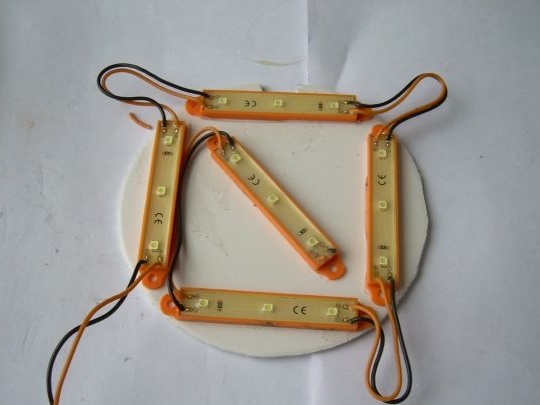
I pretend to check.
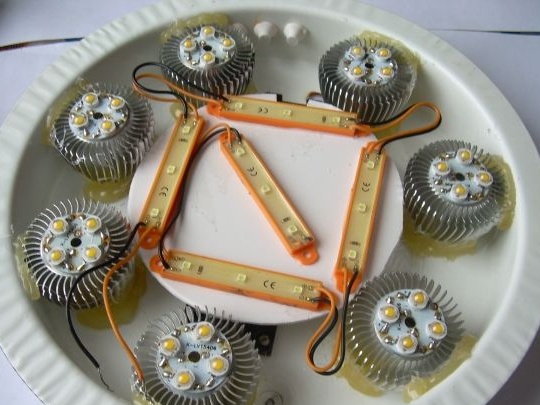
Everything fits, it's good!
I solder the wire all the radiator ice.

More closer.
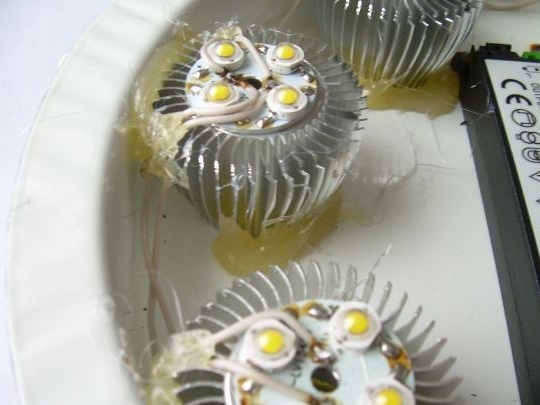
I pick up a multimeter, transfer it to an ammeter and measure the current.
Radiator ice. Current 0.4 A

Decorative lighting. Current 0.12 A
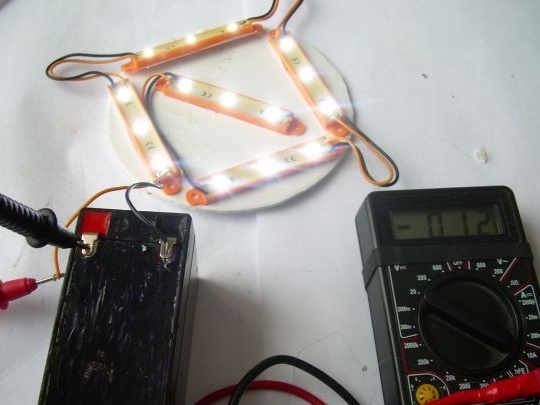
Together!!! Current 0.45
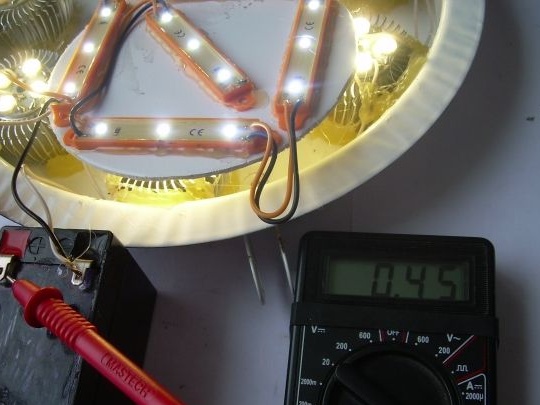
As you can see, the total current is slightly less than. if we orally put radiator ice and decorative lighting. The sum is 0.52 A, and the ammeter is 0.45 A. In principle, I guess why this is so, but I would like to hear the opinion of experts !!!!
I connect and fix finally decorative lighting.

So the rubber ring came in handy, I put it so that the plexiglass does not touch the LEDs and I finally twist

I confirm my measurements with a formula.
U = 12V I = 0.5A (current taken with a small margin)
P = I * U 12 * 0.5 = 6 W
P = 6 W
From the calculations it is clear that my lamp "eats" a little, but it is worth considering the fact that it also does not shine with the sun. Therefore, we place it in a small room.
All the time I forget about personal identification :) Now I have to take a picture of the logo standing :).
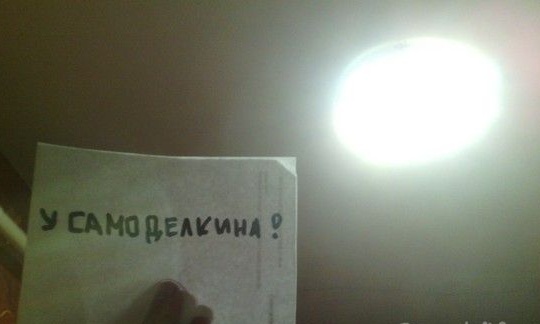
Conclusion:
In my opinion, this is a worthy use of used ice lamps.Many people throw them out not for need, but for nothing, in principle, you can make a pretty pretty lamp like this. I am sure that he will serve me for a long time!
All success in the creative industry !!!!!!!!!!

